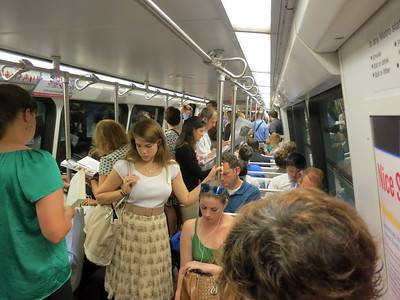What a difference a day – or a year – makes. The Bureau of Labor Statistics released the labor force participation rates for August last week and – well – records are made to be broken, right? The participation rate among so-called prime-age women is higher than it has ever been. That’s true among women at all education levels, and women with children of all ages.
That’s likely the result of a combination of factors, including the number of job openings. According to the BLS, that would have been 8.8M, which is slightly less than the number of job openings in July. At the same time, the number of new hires was about 5.8M. That includes nearly 200,000 new jobs employers added in August.
The demand for workers is high and real average hourly wages are increasing. Additionally, the number of average hours in the work week has declined by about 36 minutes. All these factors favor women and make it easier for them to influence the labor force participation rate.
That’s not great news for community colleges, whose enrollment has depended upon women for the last decade or more. Women now find more opportunity in the workplace than they do in potential future earnings following a stint in a college classroom.
That’s saying something. In 2022, according to the BLS, women earned 83% of what men earned, a drop from the 83.1% women earned in 2021. Earnings among women in different demographic groups were not equal. Earnings peaked for Hispanic and Black women in 2021, at the height of the pandemic. Pay premiums for front line work likely explain the wage growth for these women. In 2022, wages declined among Black and Hispanic women by 3.4% and 1.8% respectively. Wages among White and Asian women increased by 0.8% and 0.7% respectively between 2021 and 2022.
Wages influence labor force participation rate, community college enrollment
Community college enrollment fell hard between 2019 and 2021. During this period, community colleges enrolled about 850,000 fewer students. Much has been written about the enrollment decline among men, but by 2021, community college enrollment among women was dropping at a faster rate than it was among men. Currently, females comprise about 54% of students enrolled at community colleges, a decline from about 60% in 2020.
This is more evidence that women – the lowest-paid workers in the prime-age workforce – don’t see the financial benefit of a community college education. Community college enrollment won’t increase until community college administrators start focusing more on alumni outcomes (read: alumni incomes) and less on the shifting desires of employers, especially those who want the lowest-paid employees they can find.
Community colleges shouldn’t have to compete with the workforce for enrollment. Unfortunately, this is what happens when community colleges develop programs for low-wage sectors. If they concentrated on developing programs for emerging high wage sectors, they could attract students to their classrooms and appeal to employers who want well-trained, high-skill employees. They could also attract new sectors to the area. We could see increases in both community college enrollment and the labor force participation rate.
What’s the better strategy: filling classrooms and building economic capacity or driving people away from the classroom and into the workforce?
Photo Credit: Daniel Lobo, via Flickr













